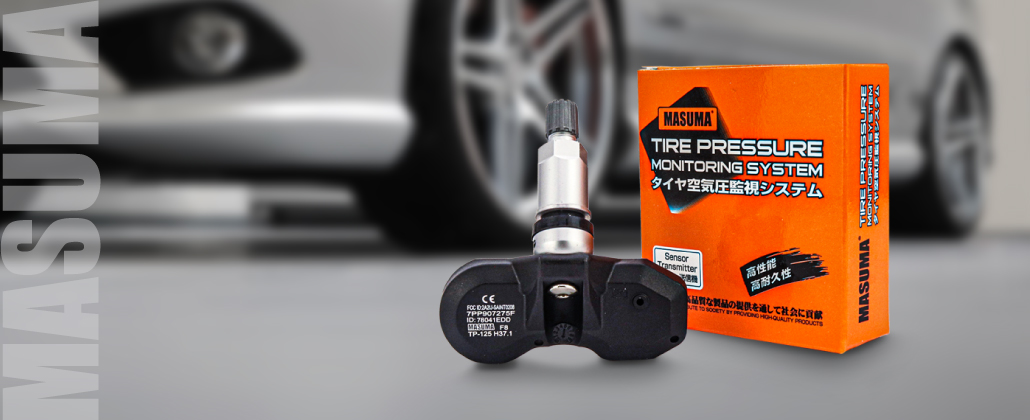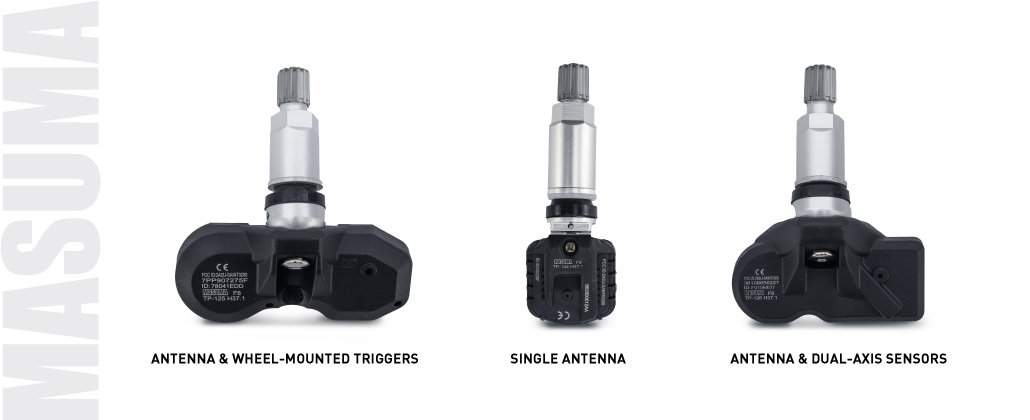
A new addition to Masuma’s range of electronic components: tire pressure sensors.
The Tire Pressure Monitoring System (TPMS) is featured in many modern vehicles. Using sensors, the system monitors the pressure in each tire and alerts the driver to potential punctures. This enhances safety, automates pressure control (which affects handling and fuel efficiency), and helps detect a deflating tire in time to avoid damage to the tire and rim.
DIRECT VS. INDIRECT TPMS
Tire pressure monitoring systems fall into two generations with different measurement methods: indirect TPMS I and direct TPMS II.
Indirect systems are outdated first-generation TPMS (TPMS I), which rely on ABS data and wheel rotation speed. These systems are simpler and more reliable, but less accurate and informative: they only detect the fact of pressure loss, not the actual pressure value.
Direct systems are modern second-generation TPMS (TPMS II), equipped with individual sensors in each wheel. These sensors measure exact pressure values in real time, though their service life is limited. Direct TPMS are the most widely used today.
Common TPMS Sensor Issues
Most failures in modern TPMS II systems are related to malfunctioning wheel sensors. The following are common causes:
- Battery depletion. Sensor batteries typically last from 4 to 7 years. Low temperatures can significantly shorten their lifespan.
- Mechanical damage. Vibrations from poor road conditions, improper installation, or unprofessional battery replacement can damage the sensors.
- Contact corrosion. Exposure to moisture and road chemicals can damage the electrical components of the sensor.
- Signal interference and software glitches. System errors can result from lost sensor communication or the need to register new sensors in the ECU.
Failure of any sensor disables the entire TPMS system and triggers a warning on the dashboard. To restore system functionality, the faulty sensor must be replaced.

Masuma Tire Pressure Sensors
Masuma’s sensors for modern direct TPMS operate on the most common frequencies: 433MHz and 315MHz. The product line includes sensors compatible with three types of TPMS II systems:
- Classic system with a single antenna. This system uses one central receiving antenna and sensors with unique IDs. Diagnostic tools are required to register new sensors.
- System with an antenna and wheel-mounted triggers. In addition to the central antenna, each wheel well contains a trigger (reader) that detects the signal from each sensor. New sensors are automatically registered during the first drive.
- System with an antenna and dual-axis acceleration sensors in the TPMS units. Based on acceleration data and signal strength, the system identifies each sensor, allowing automatic registration without triggers during the first drive.
Masuma sensors ensure high measurement accuracy, reliable performance under harsh conditions, and seamless integration with modern vehicles. The Masuma lineup includes over 80 TPMS sensor models — check availability for your vehicle using the online selector.



















